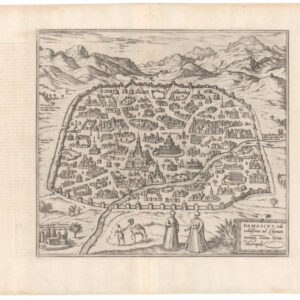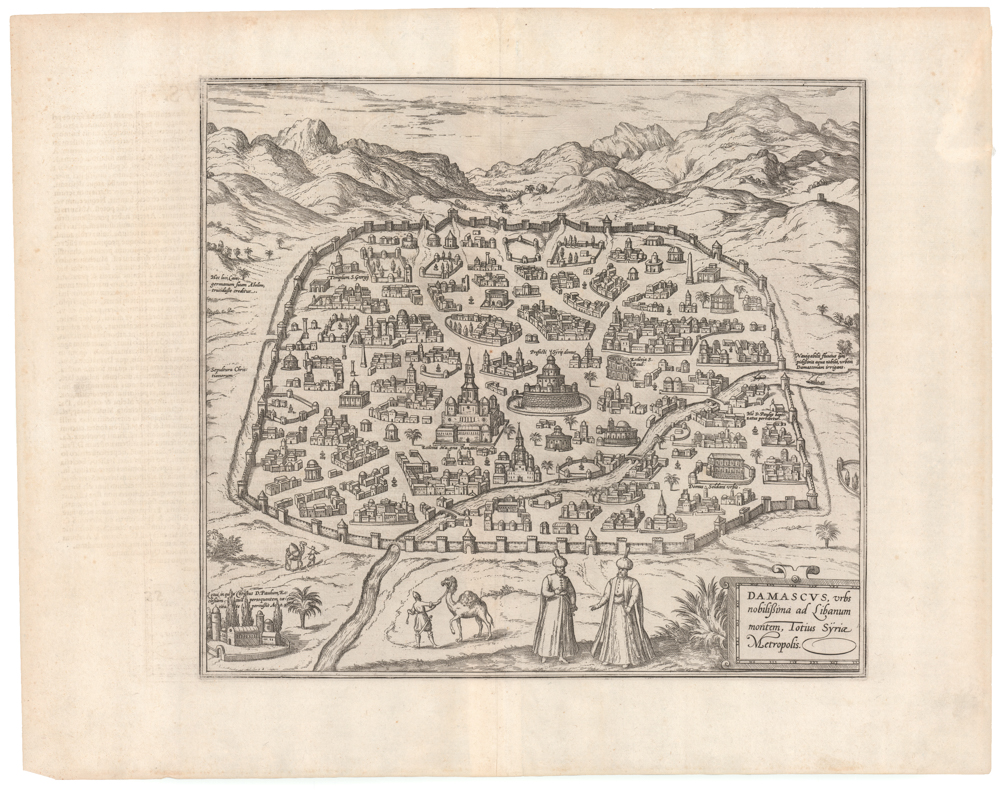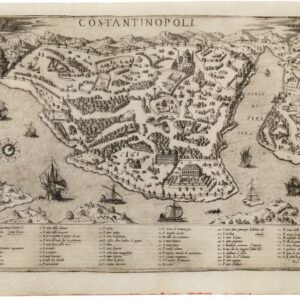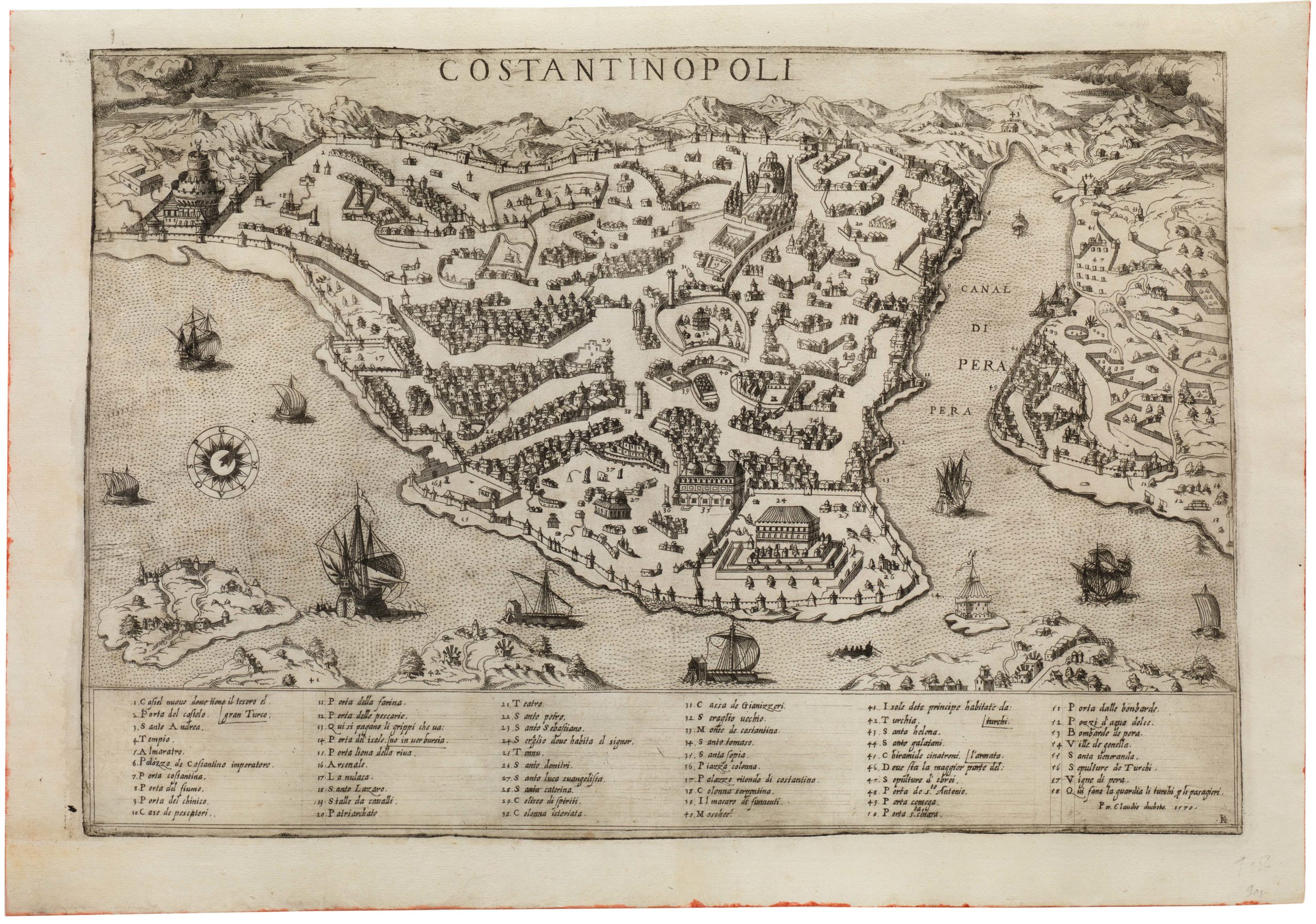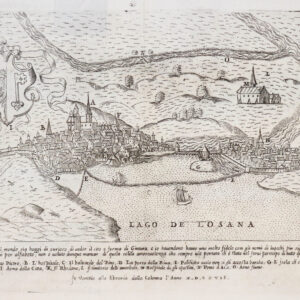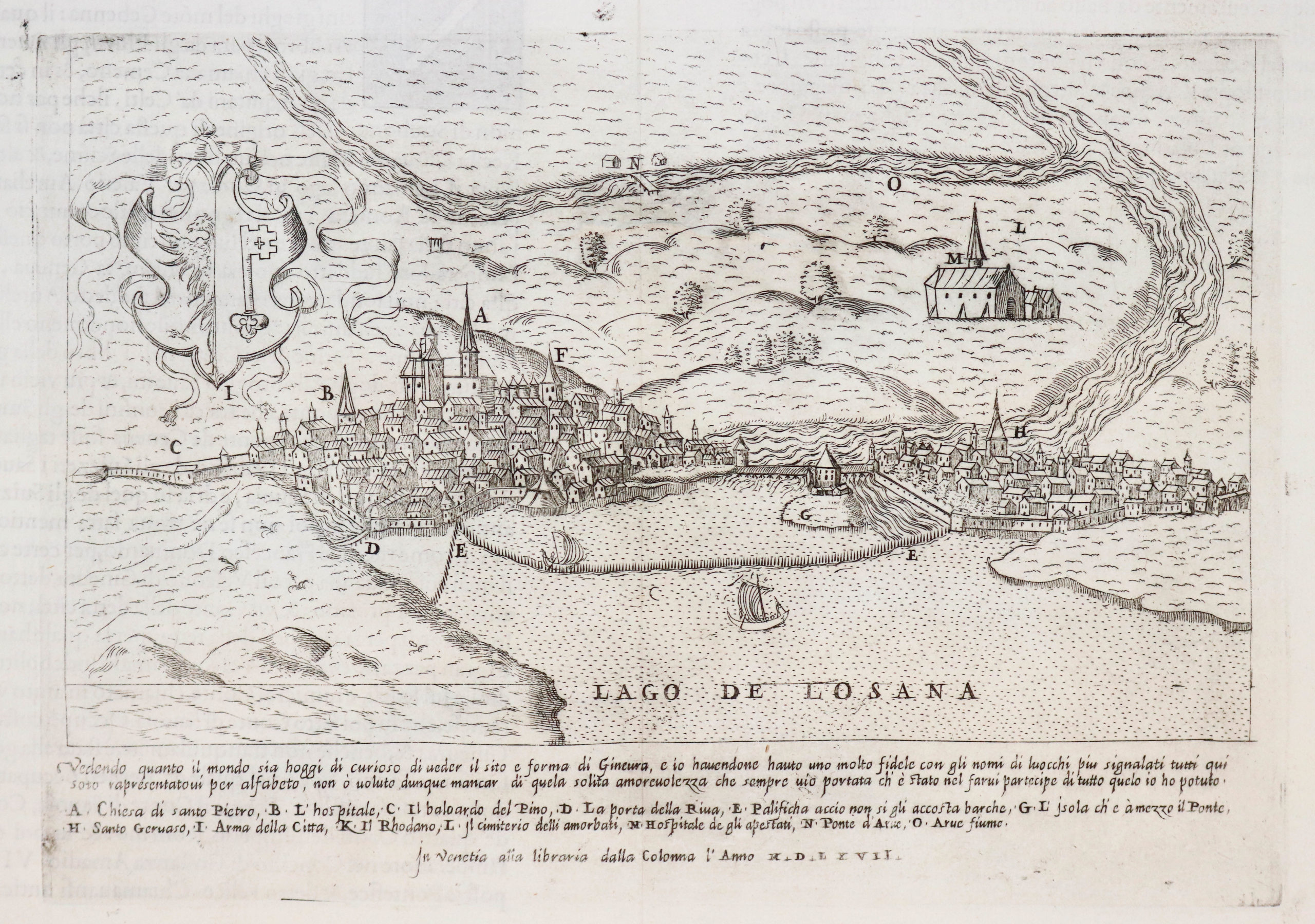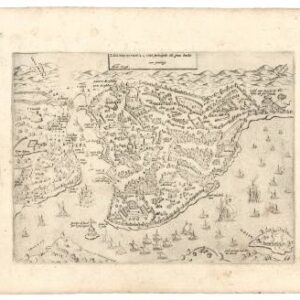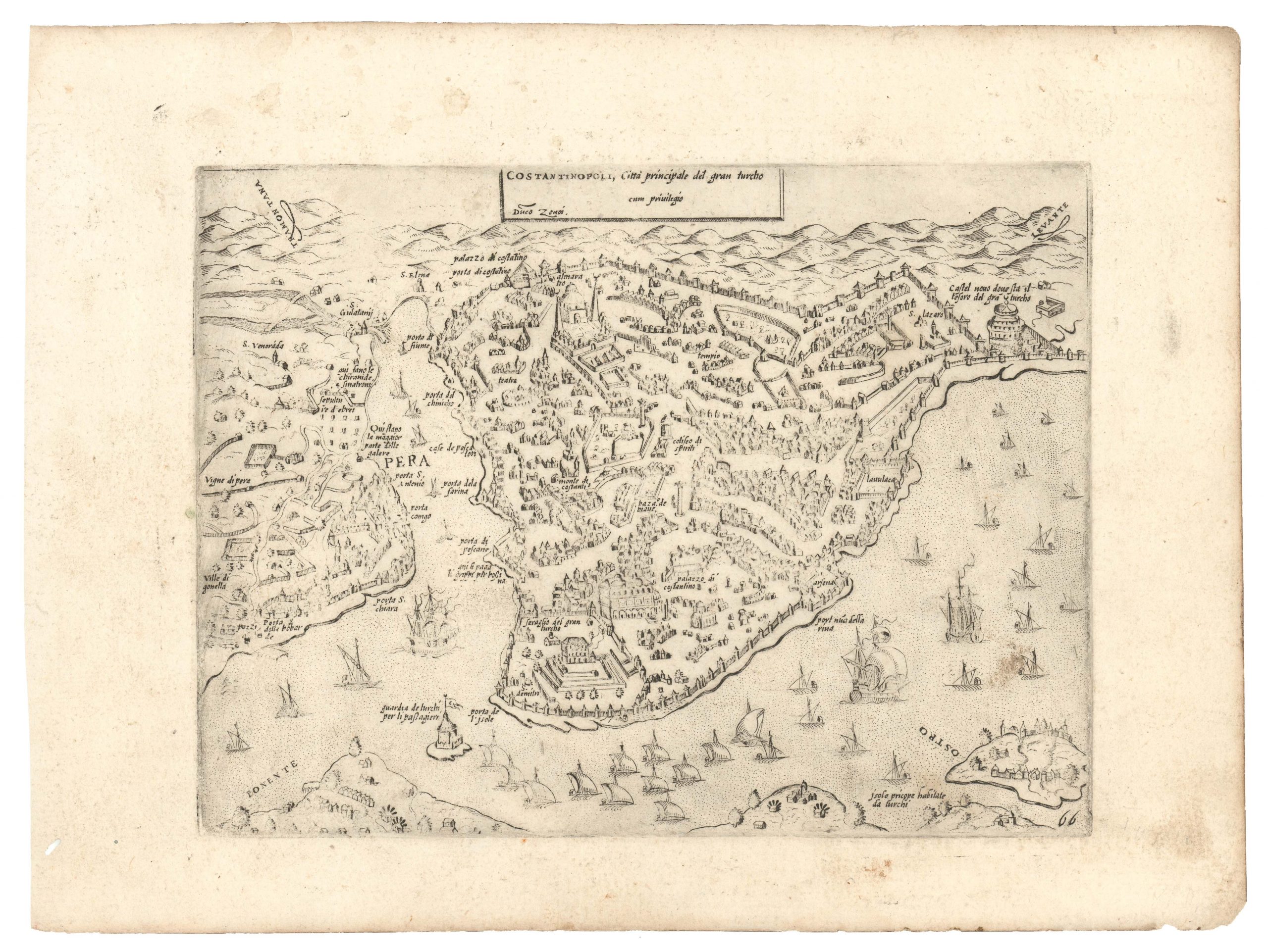A stunning and highly detailed view of the lagoon city of Venice, issued by Augsburg’s most famous publishing dynasty.
Venetia.
$4,800
1 in stock
Description
This large and stunning depiction of the lagoon city of Venice is one of the best in a series of powerful urban vistas published by Georg Balthasar Probst in the mid-18th century. Several generations of the Probst Family had issued city panoramas from across the European continent, but this particular view was originally drawn by German artist, Friedrich Bernhard Werner.
In 1730, Werner visited Venice, Genoa, and a number of other Italian cities on commission from Probst’s grandfather, the pioneering Augsburg publisher Jeremias Wolff. The goal of Werner’s trip was to compile a series of urban views that Wolff intended to publish. In his autobiography, Werner explains how he created the current grand vista of Venice by combining a selection of drawings and sketches that he had produced on site. Werner compiled several such panoramas for the Probst firm, all of which are distinguished by their size and impressive detail, not to mention a numbered key to identify important sites and buildings.
The panorama provides a full view of the Venice skyline as seen from the south. As it includes the lagoon islands fronting the old city, the vantage point for composing this impressive overview must have been the slightly more distant lagoon island of La Grazia. Providing a perspective from the harbor front, the vista includes ships and gondolas on the canals, as well as a full view of the islands of Sacca and Giudecca in the foreground. Within the city proper, the center of the view is dominated by the lively Piazza San Marco (71), which in turn is flanked by the massive Campanile or bell tower (39) on the left, and the famous Chiesa San Marco (42) on the right. In the piazza itself, we see Venetians engaged in trade, viewing spectacles, or simply strolling through the city. Hovering in the skies above, we find a large title banner set on a ribbon of Venetian silk and flanked on the left by the city’s coat of arms: the winged lion of St. Mark.
As is usually the case with Werner’s views, all of Venice’s many historic landmarks have been numbered and labeled in an extensive trilingual key along the top (German) and bottom (Italian and Latin respectively) of the sheet. The key includes 86 important and identifiable locations distributed throughout the city, allowing the modern viewer to find and recognize most if not all of the historic buildings that adorn Venice. In addition to the Piazza San Marco and Campanile, we note the presence of architectural icons such as the Basilica Santa Maria della Salute (10), La Zecca or the mint (73), la Magistrata alla Sanità (74), la Arsenale (60), the Doge Palace (75), and the Chiesa del Santissimo Redentore (81) on the island of Giudecca. Add to this a cornucopia of churches, palaces, villas, and gardens; all for our viewing pleasure.
Despite being more than 300 years old, one could almost navigate Venice today using this wonderful view of the city.
Context is everything
The tradition of compiling city views as part of urban geography goes back to the 16th century when Georg Braun and Franz Hogenberg first published their extraordinary urban views in the Civitates Orbis Terrarum (Cologne 1572).
This particular look at Venice is but one in a series of views of European cities published by several family firms in Augsburg during the 18th century. They are commonly referred to as “Probst views” after the most significant family of publishers operating there. As is the case with our Venice skyline, Probst views typically depict a city from a slight elevation, but not quite reaching a bird’s-eye view. At the same time, they were large enough to include enough detail to delineate all of the individual buildings necessary, as well as more ephemeral features such as people, trees, carts, and boats.
The Probst family firm lasted for at least four generations but was repeatedly subdivided between heirs, leaving a rather chaotic history to disentangle. Essentially, the firm was started by Jeremias Wolff (1663-1724) around 1700. It was also Wolff who first started commissioning artists’ views of European cities. After his death, the firm was continued by his heirs under the direction of his son-in-law, Johann Balthasar Probst (1689-1750). Following his death, the plates owned by the company for decades were split between three heirs Johann Friedrich Probst (1721-1781), Georg Balthasar Probst (1732-1801), and Johann Michael Probst, who each published views in their own name.
Cartographer(s):
Friedrich Bernhard Werner was a German printmaker, draftsman, and chronicler. During his youth, he was largely itinerant, finding work wherever he could. Eventually, he settled in Augsburg, where he started compiling views for the town’s successful publishing houses (including Martin Engelbrecht, Johann Christian Leopold, and Jeremias Wolff). Werner specialized in panoramic views of towns, and he traveled around Europe, producing almost a hundred views for his Augsburg patrons. Later in life, Werner produced an extensive topographical work on the Duchy of Silesia, which included over a thousand hand-colored ink drawings and maps.
Georg Balthasar ProbstGeorg Balthasar Probst (1732-1801) was a German engraver and printer working in Augsburg between 1766-1790. He was the third generation of engravers in the family firm, the grandson of Jeremias Wolff and son of Johann Balthasar Probst.
Condition Description
Various minor repairs and blemishes, all typical of large city views from this era. Backed on archival paper.
References
